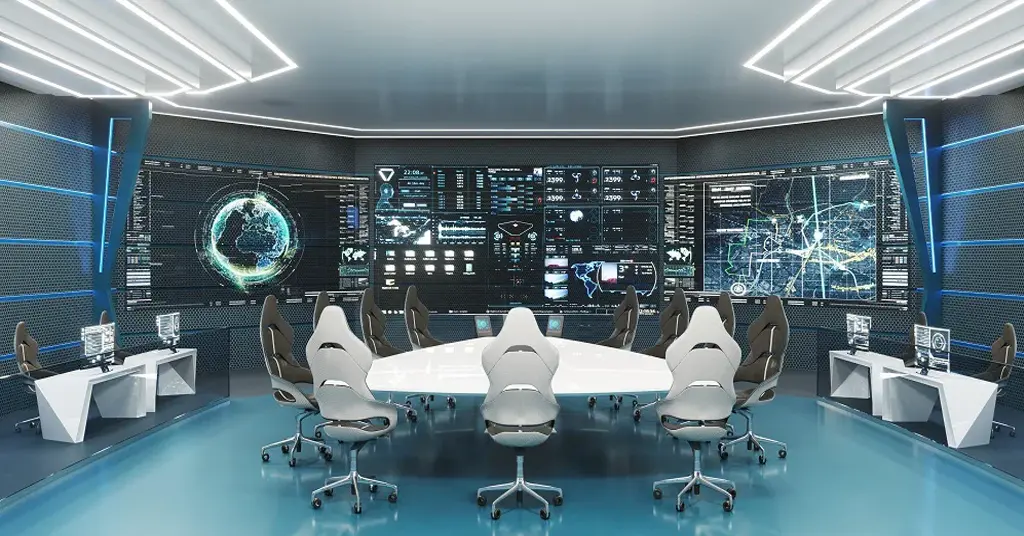Top Audio Visual Solutions for Traffic Control Centers
Traffic control centers play a vital role in ensuring safe and efficient traffic on roads, bridges and highways. It can reduce road congestion and accidents as much as possible, and issue safety warnings to drivers in bad weather to reduce accident risks.
With traffic patterns and road networks becoming increasingly complex, having a reliable and effective audio visual solution is a must for every traffic control center. In this article, we take you through the top audio visual solutions for traffic control centers. From state-of-the-art audio visual technology to cost-effective solutions, we’ll cover everything you need to know to make the smartest choice when choosing a traffic control center solution.
Table of Contents

As one of the most powerful systems in the traffic control center, the audio-visual integrated system can provide real-time current traffic conditions, obtain real-time pictures and audio information of traffic accidents and safety alarms. This information allows traffic control personnel to make the most rapid and correct response and decision-making to sudden situations at the first time. Below are the top audio visual solutions that traffic control centers can take advantage of.
LED video wall
LED VIDEO WALL is a high-resolution display that can display multiple video sources and multiple single video sources at the same time. LED video wall usually consists of multiple LED display panels. Through high-definition cameras on roads or tunnels, traffic control personnel can clearly understand the current road traffic conditions on the LED video wall.
These LED video walls are ideal for monitoring critical areas such as intersections, toll booths, and traffic accident scenes, and provide real-time updates on traffic flow, congestion, and weather conditions. There may be some differences between the LED video wall used by railways and airports and the LED video wall used by road traffic control centers. The former pays more attention to the safe operation of the traffic network when using the LED video wall.
There are many benefits of LED video wall, including but not limited to:
- Improve situational awareness and decision-making
- Enhance communication between traffic control centers and drivers, emergency responders, maintenance personnel and emergency rescue teams
- Reduce emergency response time to reduce the likelihood of road congestion
- Significantly reduce maintenance costs and energy consumption
Digital signage
Digital signage can be seen everywhere in daily life, and it is one of the most common ways to inform and obtain information. After using digital signage, the traffic control center can provide drivers and pedestrians with relevant information about traffic conditions, passing routes, closed roads and emergency warning lights.
Digital signage is usually placed in some important eye-catching locations, such as highways, bridge ends, tunnel entrances and parking service areas. The traffic control center can assign different information to each digital signage according to emergencies or special events, so that drivers, passengers and pedestrians can get enough attention.
There are many benefits of using digital signage, including but not limited to:
- Improve driver safety awareness
- Provide safety warnings on dangerous road sections where accidents may occur
- Effectively improve traffic flow on congested roads
- Better communication with emergency responders and maintenance personnel
Audio System
Audio system usually does not work independently of a video system. Audio systems are responsible for providing critical alerts and instructions to occupants and emergency responders in noisy and cluttered environments. The audio system is integrated with systems such as LED video wall and digital signage to provide a comprehensive and coordinated traffic management method for the traffic control center.
The audio system can also be integrated with the emergency distress system. When an accident occurs, the traffic control center can guide the people in distress to take safety measures quickly and effectively through the loudspeaker on the road to ensure the safety of life. In rainy, snowy and dense fog weather, the audio system can also send out an alarm sound to warn and guide the drivers and passengers, so as to offset the traffic safety hazards caused by the obstructed line of sight.
Audio system plays an important role in audio-visual solutions, its advantages include but not limited to:
- Enhance security and emergency response
- Facilitates cleaning and concise communication between drivers and emergency responders
Audio-visual integrated system console
Audio-visual integrated system management and control center integrates all audio and video hardware devices, signal transmission, data processing and other software. It provides traffic controllers with the tools and information they need to manage complex traffic systems.
Different traffic control centers have very different requirements for control consoles, such as highway and railway traffic control centers. The traffic console achieves the purpose of efficient traffic control by integrating all audio-visual functions.
As the core of the entire traffic control center, it has many benefits, including but not limited to:
- For video feeds and traffic data analysis
- Integrated power and cable management to create a neat and orderly traffic control center
- Modular and expandable design, convenient for later system and software upgrades
Conclusion
The top audio visual solutions for traffic control centers offer a range of benefits, from improved communication and collaboration to enhanced safety and security. By choosing the right solution for your specific needs and budget, you can ensure the smooth and efficient management of your city’s transportation systems. Whether you opt for LED video walls, digital signage, or video conferencing technology, the right audio visual solution can help you stay ahead of traffic flow and respond to emergencies more quickly and effectively.
Others also read the following article
Want to know more about the Audio Visual Solutions?
